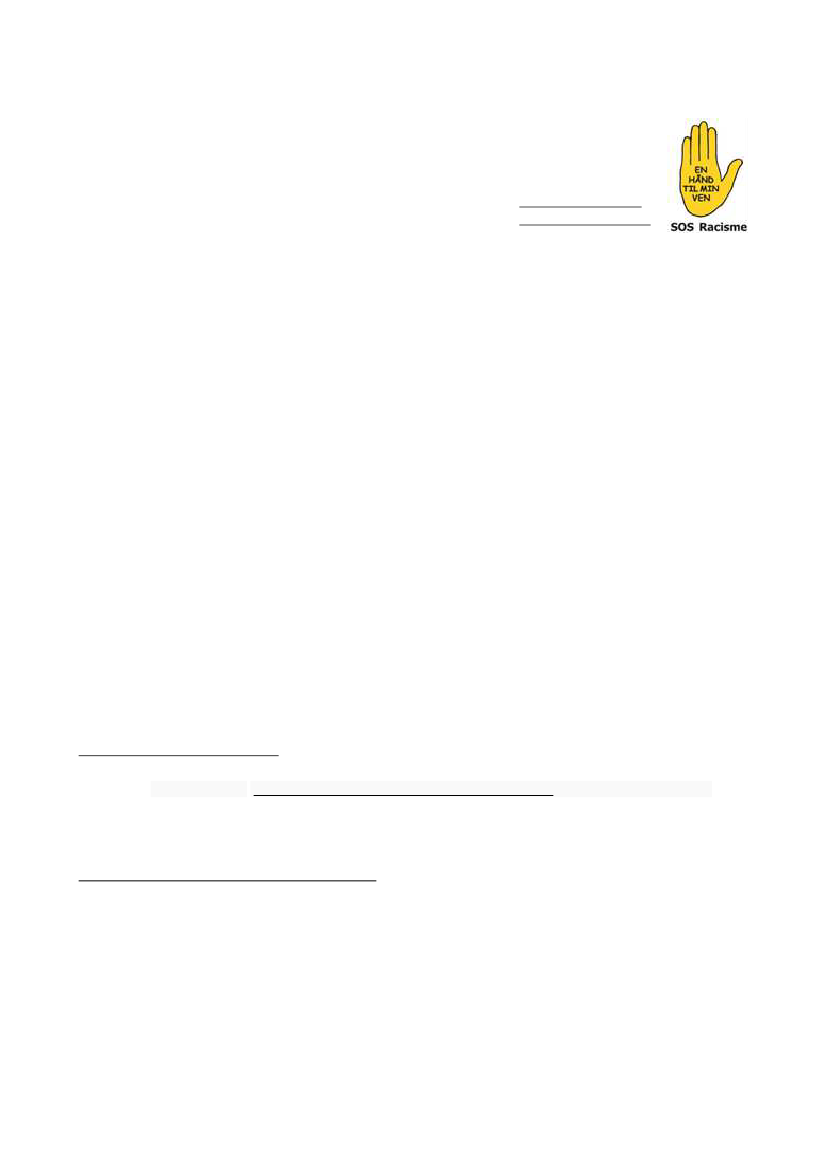
Norre Allé 7
2200 Copenhagen N
Denmark
www.sosracisme.dk
To the Embassies of the Member States of the Council of Europe
11th February 2019
Dear Sirs,
SOS Racisme Danmark urges the member states of the Council of Europe not to return asylum
seekers or refugees to Denmark if they have been rejected there or had their Danish residence
permit revoked.
Refoulement to Countries with Civil War
In violation of Article 3 of the European Convention on Human Rights refugees and others from war-
torn countries risk being forcibly deported by Denmark to their country of origin, which is unable to
protect them.
In spite of warnings from the UNHCR
1 2
Denmark uses both Kabul and Mogadishu as Internal Flight
Alternatives. The Danish government keeps everything under wraps concerning forced deportations to
Somalia, but it is estimated that 14-16 Somalis were forcibly returned in 2016-2017. Around 1000 Somali
refugees and their relatives have had their residence permits revoked and are to leave Denmark as soon
as possible. Denmark has forcibly returned deportees to Afghanistan as well as Somalia by attempting
to deliver them to the immigration authorities in the airport. According to
acleddata.com
3
at least 1079
civilians were killed in Mogadishu in 2017, 587 of them in the terror attack of 14 October 2017; and in all
of Somalia 1843 civilians were killed that year. The number of civilians killed in Mogadishu was higher
in 2017 and there were more internally displaced persons (IDPs) in the city than in 2011, the year the
European Court of Human Rights ECtHR ruled that the return of anybody might violate Article 3 of
1
UNHCR Eligibility Guidelines for Assessing the International Protection Needs of Asylum-Seekers from
Afghanistan, 30 August 2018 https://www.refworld.org/docid/5b8900109.html [accessed 9 February 2019]
“UNHCR
considers that given the current security, human rights and humanitarian situation in Kabul, an
IFA/IRA is generally not available in the city.”
2
“UNHCR
Positions Concerning Forced Returns
Under the present circumstances, UNHCR continues to urge States to refrain from forcibly returning any
persons to areas of southern and central Somalia that are affected by military action and/or ensuing
displacement, remain fragile and insecure after recent military action, or remain under full or partial
control of non-State armed groups. General non-refoulement obligations under international human
rights law may be engaged in the context of forcible return of Somalis to southern and central Somalia.”
Armed Conflict Location & Event Data Project: www.acleddata.com/data is open for public use. Counts of
deaths stems
from ACLED’s database on Civilians, with counts for Somalia and from Mogadishu
(Banadir).
3
UNHCR Position on Returns to Southern and Central Somalia (Update I), May 2016
https://www.refworld.org/docid/573de9fe4.html [accessed 9 February 2019]
1